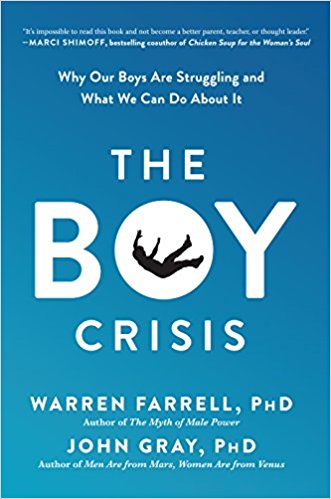![]()
Children living in poverty unchanged in 10 years despite pledges to end it
Canadian Press, LORRAYNE ANTHONY, Tuesday, May 13, 2003
OTTAWA (CP) - Child poverty in Canada has been stuck at virtually the same level for the past decade despite a motion, passed unanimously in the House of Commons, to eliminate it by 2000.
The latest snapshot of income released Tuesday by Statistics Canada as part of the 2001 census showed there were just over 1.2 million children living in low-income households in 2000. The proportion - 18.4 per cent - is slightly higher than a decade earlier, when 18.2 per cent of children were living in low-income families. It's down only slightly from 19.4 per cent in 1980.
"There really hasn't been a change - if anything it's edged up slightly," Mikal Skuterud, an income analyst with Statistics Canada said Tuesday. "In fact there are more children in low income."
Statistics Canada defines low-income families as those who spent more than 55 per cent of their before-tax income on the basic necessities - food, shelter and clothing. For a family of four in a large city of more than 500,000 people, $34,572 is the cutoff point. The same family in a rural area would be considered low-income at $23,892.
The latest data, the last to come from the 2001 census, shows families in the bottom 10 per cent of the income scale - those with incomes below $18,990 - experienced one of the smallest gains over the decade. Even after adjusting for inflation, the average Canadian family at the lowest end of the scale gained only $81 in income, up just 0.8 per cent from 1991 to $10,346.
Families in the middle of the income scale earned just $167 More over 10 years, up 0.3 per cent to $50,423 from $50,256, with big gains realized only among the already rich.
The marginal gains for low-income families hasn't made it any easier for parents to provide for their children.
For example, earlier this month Laura Legere was calling around to her neighbours asking to borrow an egg. She wanted to have some home-made muffins ready for her two teenaged sons when they got home from school. No luck by mid afternoon, but she'd been in this situation before and she was hopeful for a happy ending.
Legere, 46, doesn't have the luxury of popping out to the store to pick up a few sundries. She and her sons, Nick, 13, and Damon, 15, live in Dartmouth, N.S. on a very strict budget. When the groceries run out, that's it until the next paycheque.
Nick and Damon are among the children who live in households that survive on an income of less than $18,990, the lowest 10 per cent of family incomes. They are the very people the government vowed to pluck from poverty by 2000.
"By 1989, child poverty - poverty in general - in Canada had reached a level that was lower than we'd had in a long time," said Pedro Barata, Ontario co-ordinator for Campaign 2000, a non-partisan group dedicated to pushing elected officials to keep their promise to end child poverty. "There was a real sense of optimism."
A few years later, the recession hit. Massive layoffs and a restructuring of government programs, specifically a tightening of eligibility rules for unemployment insurance, "is why we saw a huge rise in the number of people living in poverty," Barata said.
The proportion of children of recent immigrants (those in Canada less than 10 years) living in low-income households has steadily increased in the past two decades: 20 per cent in 1980, 27 per cent in 1990 and 33 per cent in 2000. The children of Canadian-born parents fared better as the proportion of these children in low-income households has been decreasing: 19 per cent in 1980, 17 per cent in 1990 and 16 per cent in 2000.
"This really reflects the earnings and the difficulty immigrants are having in matching similar Canadian-born earners," said Skuterud.
While there is a perception that children who live in poverty belong mostly to single-parent families, the census shows the proportion of lone parents with low incomes has in fact declined. In 2000, 46 per cent of low-income households were headed by single parents. The proportion was 54 per cent a decade earlier, and 57 per cent in 1980.
Meanwhile the low-income rate for couples with young children edged up 11.2 per cent over the same period.
Wayne Bessant's family is part of this expanding category.
Bessant, 30, just finished his first year at Dalhousie University while working part time to support his wife and 18-month-old son Alexander. Their income last year including student loans and bursaries was $15,000.
The plan was for his wife, Lynn-Ann Dunn, 23, to find work this summer that would turn into an evening job in the fall when Bessant returns to school to pursue his engineering degree. But unable to keep up with rent, they received an eviction notice this month. That's changed everything.
"We can't come up with the money for that and (social) services won't help us," said Dunn. "So if all else fails we'll tell them Wayne's not going back to school."
If her husband is unable to finish school and achieve a better standard of living, Dunn fears her son will grow up in poverty.
Legere's son Nick doesn't think about his life as one marked by poverty, although his mother's income is less than $15,000.
He is happy to have his own room since his older sister moved out, the kids at school who have advantages don't rub it in and there are those in worse circumstances. He said his family's second-hand clothes get passed on to another family and one of his friends recently had phone service to his home cut.
"I just think it's kinda bad that I don't get an allowance and get to go watch movies with my friends," he said, adding that he makes some pocket money doing odd jobs - shovelling driveways or raking leaves for the neighbours.
Legere makes ends meet by cutting out luxuries such as cable television, so Nick has to watch Sponge Bob cartoons at his friends' homes.
But his life has its good moments: At Christmas time "it's pretty cool that a secret Santa delivers boxes and boxes of food and movies," he said after munching one of his mom's banana muffins - unaware that some of the ingredients were borrowed.
Copyright 2003 The Canadian Press

Why boys are in trouble
Boys have been painted as the bad guys in the push to encourage girls to succeed, leaving many young men feeling confused and alienated, wondering what they did wrong
The Associated Press
January 5, 1999
According to psychologist and author William Pollack, 'sports are the one arena in which many of society's traditional strictures about masculinity are often loosened, allowing boys to experience parts of themselves they rarely experience elsewhere.'
When Harvard Medical School psychologist William Pollack administered a test to a group of 150 teenaged boys a few years ago, the results were shocking.

The Boy Crisis Book
The Boy Crisis: Why Our Boys Are Struggling and What We Can Do About It
Authors- Waren Farrell PhD and John Gray PhD
What is the boy crisis?
It's a crisis of education. Worldwide, boys are 50 percent less likely than girls to meet basic proficiency in reading, math, and science.
It's a crisis of mental health. ADHD is on the rise. And as boys become young men, their suicide rates go from equal to girls to six times that of young women.
It's a crisis of fathering. Boys are growing up with less-involved fathers and are more likely to drop out of school, drink, do drugs, become delinquent, and end up in prison.
It's a crisis of purpose. Boys' old sense of purpose-being a warrior, a leader, or a sole breadwinner-are fading. Many bright boys are experiencing a "purpose void," feeling alienated, withdrawn, and addicted to immediate gratification.
So, what is The Boy Crisis? A comprehensive blueprint for what parents, teachers, and policymakers can do to help our sons become happier, healthier men, and fathers and leaders worthy of our respect. Read More ..

Health Canada Publication
The Invisible Boy: Revisioning the Victimization of Male Children and Teens
"... the existence of a double standard in the care and treatment of male victims, and the invisibility and normalization of violence and abuse toward boys and young men in our society.
Despite the fact that over 300 books and articles on male victims have been published in the last 25 to 30 years, boys and teen males remain on the periphery of the discourse on child abuse.
Few workshops about males can be found at most child abuse conferences and there are no specialized training programs for clinicians. Male-centred assessment is all but non-existent and treatment programs are rare. If we are talking about adult males, the problem is even greater. A sad example of this was witnessed recently in Toronto. After a broadcast of The Boys of St. Vincent, a film about the abuse of boys in a church-run orphanage, the Kids' Help Phone received over 1,000 calls from distraught adult male survivors of childhood sexual abuse. It is tragic in a way no words can capture that these men had no place to turn to other than a children's crisis line."
American Psychological Association
Dating Violence Statistics in the United States
Nearly one in 10 girls and one in 20 boys say they have been raped or experienced some other form of abusive violence on a date, according to a study released Sunday at the annual meeting of the American Psychological Association.
![]()
The mean T-shirt: From the Stupid Factory
Todd Goldman says his popular boy-bashing T-shirts are simply funny.
So why are retailers having second thoughts? Read More ..

Why boys are in trouble
Boys have been painted as the bad guys in the push to encourage girls to succeed, leaving many young men feeling confused and alienated, wondering what they did wrong
The Associated Press
According to psychologist and author William Pollack, 'sports are the one arena in which many of society's traditional strictures about masculinity are often loosened, allowing boys to experience parts of themselves they rarely experience elsewhere.'
When Harvard Medical School psychologist William Pollack administered a test to a group of 150 teenaged boys a few years ago, the results were shocking.

